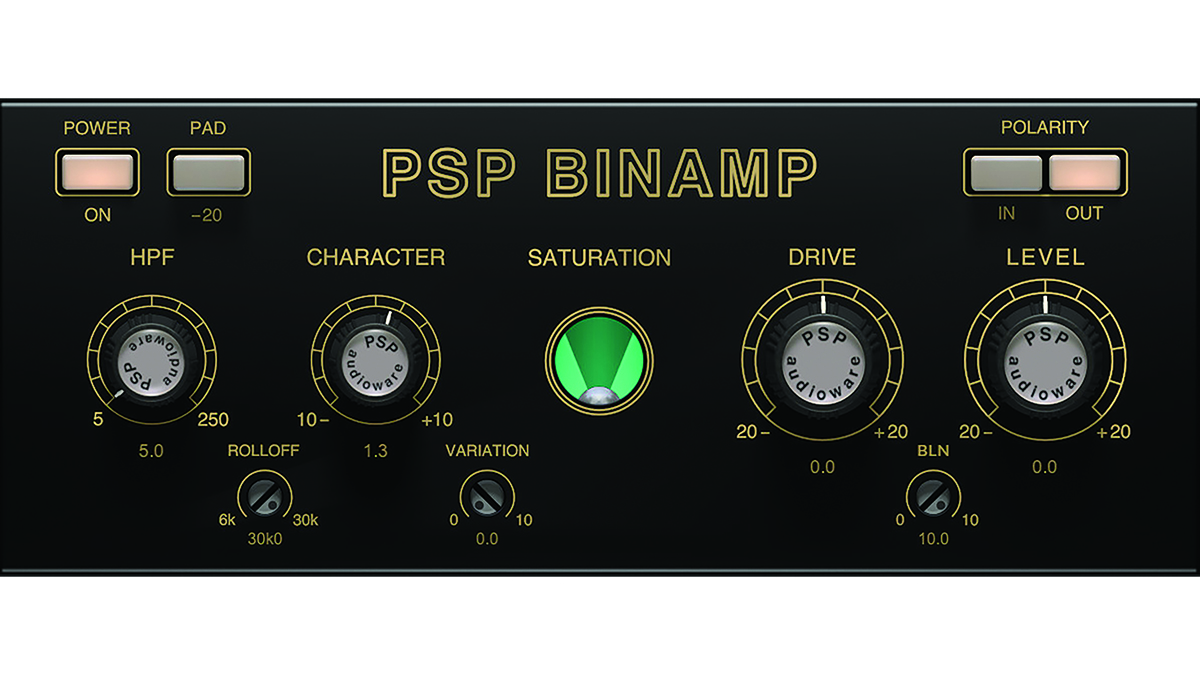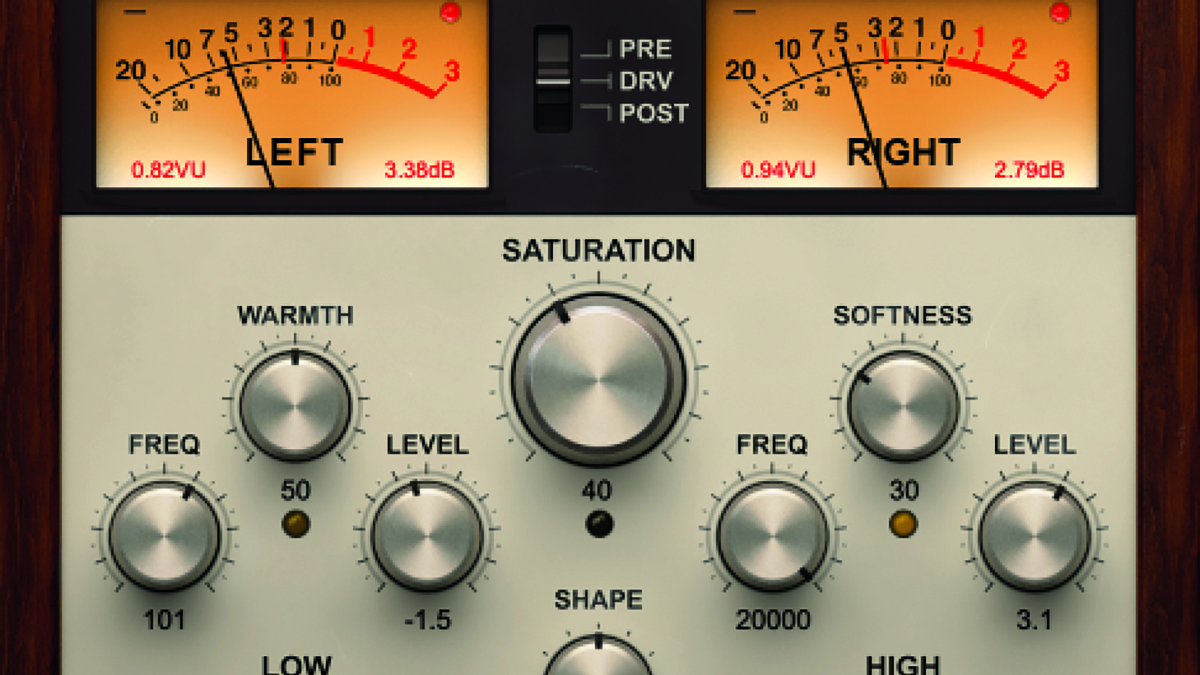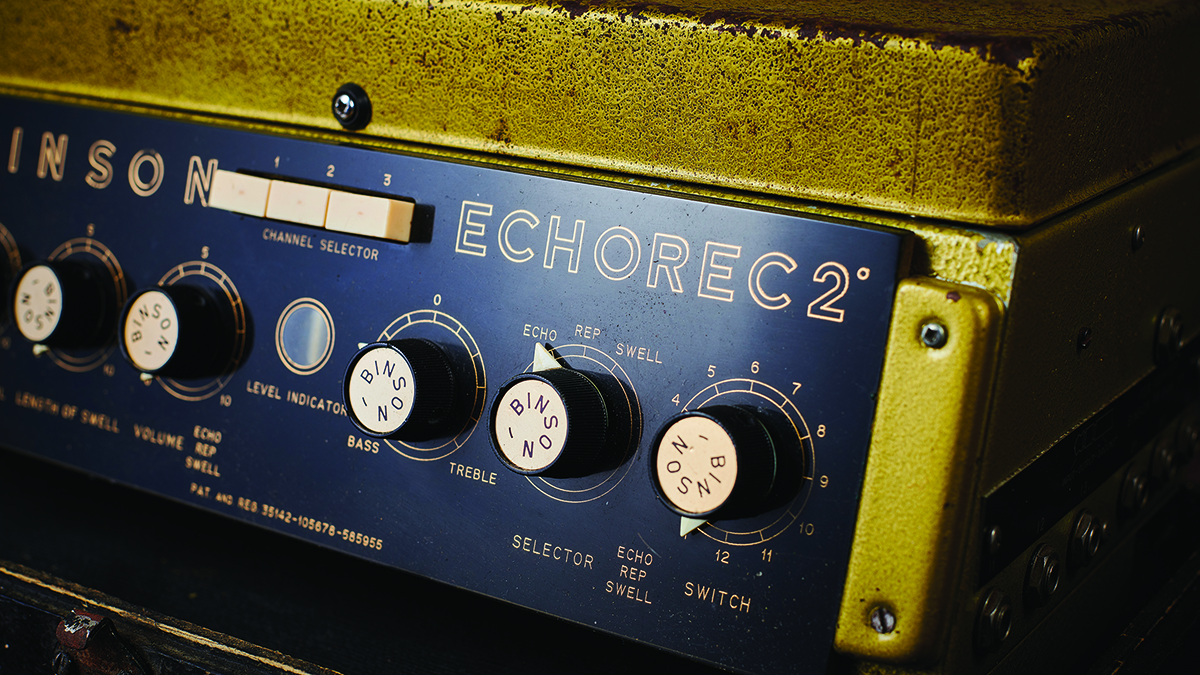MusicRadar Verdict
A gorgeous-sounding emulation of a rare vintage valve preamp circuit, but the UI and UX don’t reach PSP’s normal standards.
Pros
- +
Great-sounding Class A preamp.
- +
Musically-complementary triode valve.
- +
Automatic output level compensation when adjusting Drive amount.
Cons
- -
Input gain range limited.
- -
Plugin window needs focus.
- -
Insufficient indication of mode switches.
MusicRadar's got your back
PSP Audioware BinAmp: What is it?
macOS: 10.14 – macOS 14 Sonoma.
Windows: 7 – Windows 11.
Plugin formats: VST, VST3, AAX.
View at Plugin Boutique
Look far enough back into the history of audio recording technology and you find yourself surveying a graveyard of once-great names now sadly deceased. Look more closely and you’ll also notice gangs of plugin developers searching the epitaphs for an as-yet untapped manufacturer or product to resurrect into digitally modelled glory.
This isn’t something we’re used to seeing PSP Audioware doing though, since the company tends towards original creations. However, its latest release, BinAmp, is in many ways not a typical PSP plugin.
BinAmp resurrects the Binson Echorec 2° (‘2°’ is the Italian equivalent of the English ‘2nd’), but PSP has discarded the original’s magnetic drum-based echo generation, focusing solely on the Class A, triode valve preamp circuit responsible for the original’s characteristic warm, rich sound.

PSP Audioware BinAmp: Performance and verdict
The preamp starts with a filter stage offering both high-pass from 5 to 250Hz and a high-frequency rolloff ranging from 30kHz down to 6kHz.

• PSP Saturator
Blend between tape saturation and valve overdrive with this attractive and flexible saturator plugin.
• SPL TwinTube
This combination of saturation and harmonic processing adds weight, brightness and loudness.
This is followed by a Character dial that modifies the circuit’s response time, in effect letting it swing from a fat, warm, woolly-sounding saturation through to a tighter, edgier and more broken-up distortion.
The Drive knob controls the input gain and therefore the overall strength of overdrive, but it also applies a compensating reduction in the output gain. This is a really nice touch, making it much easier to hone in on the desired amount of drive without having to continuously tweak the output level.
Similarly, the plugin’s input also sports a -20dB Pad button that applies a compensatory boost at the output. However, given that we sometimes found the maximum +20dB of drive/input gain to be insufficient to get the modelled triode valve running as hot as desired, we can’t imagine many instances when a -20dB pad will prove necessary… a +20dB boost would seem more useful!
Want all the hottest music and gear news, reviews, deals, features and more, direct to your inbox? Sign up here.
The Level control deals with the overall final output level of the plugin, but this can be switched into Makeup mode, causing the
gain change to be applied prior to the circuit’s Blend stage. Unlike a conventional wet/dry balance, Blend determines the mix of pre- and post-valve signal, meaning the input filtering is in place on both wet and dry signals. If you
want a standard wet/dry balance, the Blend control can be switched into Mix mode, causing the dry portion of the signal to be tapped prior to the filter.
The amount of saturation is visualised via a ‘magic-eye’ – essentially the head of a special valve that responds to signal level. This can be switched to show the output level if desired, but it doesn’t really give any accuracy in this mode – a nice PSP-style needle meter would have been much more apposite.

GUI gripes
With BinAmp, PSP has taken something of a departure from its traditional GUI design approach, choosing to mimic the appearance of the original hardware’s front panel rather than create an original design. Whether this was a good decision is debatable because, whatever its sonic qualities, the Echorec 2° could never be described as a good-looking machine, and so BinAmp isn’t the most enticing thing to look at either.
We’ve mentioned that a number of BinAmp’s controls can be switched between different modes – Level or Makeup, for example. This is done by clicking on the associated control’s label, but the only visual cue is a slight darkening of the label’s background when the mouse rolls over it. Unless you RTFM, then, you are unlikely to even notice these options exist.
Our biggest gripe with the GUI, though, is that BinAmp’s controls do not respond if its window does not already have focus, so you have to click the plugin window before you can start adjusting its controls. This is annoying to say the least, but is hopefully something that PSP can rectify.
Voice of an angel
Despite its idiosyncrasies, and notwithstanding gripes about its GUI, the good news is that BinAmp sounds utterly lovely! The modelled Class A circuit and triode valve – the original amplification vacuum tube – enhance second order harmonics, resulting in a pleasing and musically-complementary distortion tone. Given a strong enough input signal, the drive can range from a barely-perceptible scintillation through to an intense, crushed and dirty saturation.
The drive can range from a barely-there scintillation through to an intense, crushed and dirty saturation
The plugin works well on practically anything you throw at it, but we found it most effective on individual parts and tracks. We particularly liked it on basses, pads, guitars and lead synths, and were completely blown away by the energy and excitement it added to some live-recorded brass parts we’d been working on.
Altogether then, BinAmp is a peculiar beast. Its design oddities are not the norm for a PSP plugin, but stand in contrast to the excellent sonic performance, which is very much what we expect from PSP. And when something sounds this good it isn’t so hard to ignore its shortcomings.
MusicRadar verdict: A gorgeous-sounding emulation of a rare vintage valve preamp circuit, but the UI and UX don’t reach PSP’s normal standards.
PSP Audioware BinAmp: Hands-on demos
PSPaudioware
MusicMarketingTV
White Sea Studio
PSP Audioware BinAmp: Specifications
- macOS 10.14 – macOS 14 Sonoma.
- Windows 7 – Windows 11.
- Plugin formats: VST, VST3, AAX.
- CONTACT: PSP Audioware
